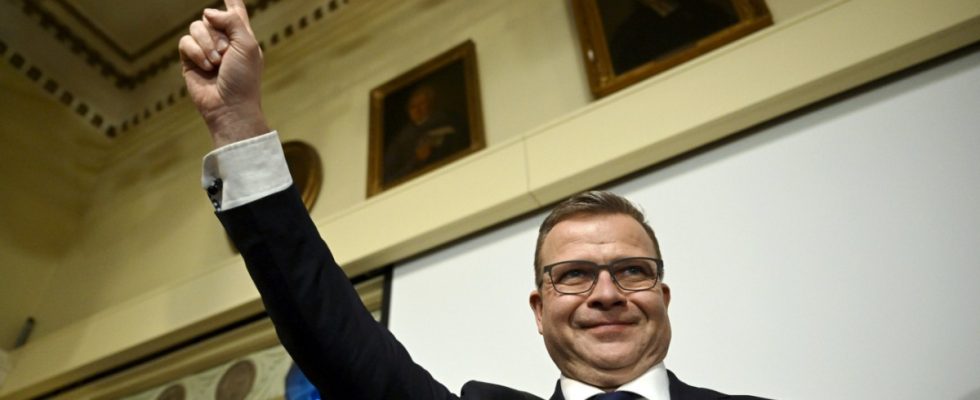In terms of content, the three are very far apart, but one sentence they said almost identically on election night: It’s closer than ever and it will be difficult. Sanna Marin, the incumbent Prime Minister from the Social Democrats, and Petteri Orpo from the conservative National Coalition Party were tied for hours at around 20 percent in the parliamentary elections in Finland, closely followed by right-wing populist Die Finnen under Riika Purra.
But then the collection party pushed forward and Orpo declared itself the winner shortly before 11 p.m. local time. His party won ten more seats and probably has 48 of the 200 seats in parliament. The EU-sceptical “Finns” gained seven seats and probably end up in second place. Almost 72 percent of the approximately 4.5 million Finns cast their vote.
Conservative winner is open to coalition with populists
It is extremely important who ends up in the lead, even if it’s only a matter of a few thousand votes, because in Finland the leader of the most successful party is the first to get the chance to form a government. Whether Marin, Orpo or Purra, the winner will have to get one of the other two major parties and at least one, more likely two other parties on board, which is why complicated election negotiations are to be expected.
Before the election, Petteri Orpo had shown himself open to coalition negotiations that he could enter into a right-leaning coalition with the “Finns” and invite the conservative Center Party, which has previously co-governed in the five-party coalition with Sanna Marin, but recently announced that it would not want to continue to form a coalition with the Social Democrats. Should Marin still win, she would almost have to embark on a grand coalition with Orpo’s collection. Of course, it could then become more difficult to find coalition partners. The left-wing parties were very hesitant, since Orpo wants to make strict savings in order to get the debt under control. At the same time he promises tax breaks.
Should “The Finns” win, they would likely seek a coalition with the collection and the center, thus ensuring a repeat of the 2015 coalition, albeit now led by Riika Purra. She warns against further immigration, wants to reduce climate protection measures as much as possible and abolish Swedish as the second official language. The Greens, the Left and two other small parties had ruled out a coalition with the “Finns”. Jussi Halla-aho, the longtime leader of the “Finns”, was confident on the evening of the election that some of the smaller parties would be willing to talk if the populists were actually ahead.
While the three major parties each gained several percentage points, several smaller parties lost ground. The Center and the Greens, also part of Sanna Marin’s government, each lost about three percentage points, or five to eight seats, in the 200-seat parliament.
The election campaign was determined by economic policy issues: Finland is groaning under a high debt burden, along with galloping inflation and fears of a recession. According to the latest figures from the Ministry of Finance, nine billion euros must be saved in the coming years. The health system is in bad shape, and the education system has been cut for more than ten years.
The good performance of the Social Democrats in power to date, who gained three additional mandates, was clearly due to Sanna Marin: the 37-year-old prime minister is by far the most popular party leader and got Finland through the corona crisis well. When Russia invaded Ukraine and the Finns, who until then had always preferred alliance neutrality, were suddenly in the majority for NATO membership, Marin carried out a historic change of course and steered the subsequent accession process in close cooperation with Finnish President Sauli Niinistö as confidently as silently to the goal.
However, NATO membership was hardly an issue in the election campaign, because 80 percent of Finns are in favor of joining. Last Friday, Turkey was the last member country to agree to the request, and Finland will become the 31st NATO partner in the coming days. The only thing left to be decided at the moment is who will represent Finland at the next NATO summit in Vilnius in July.

